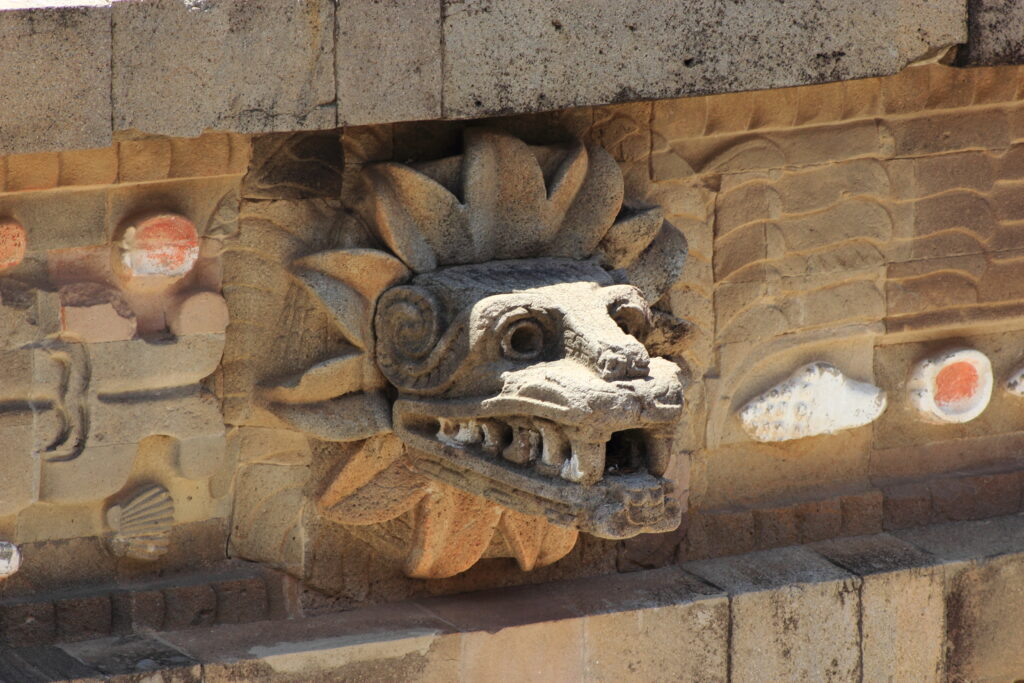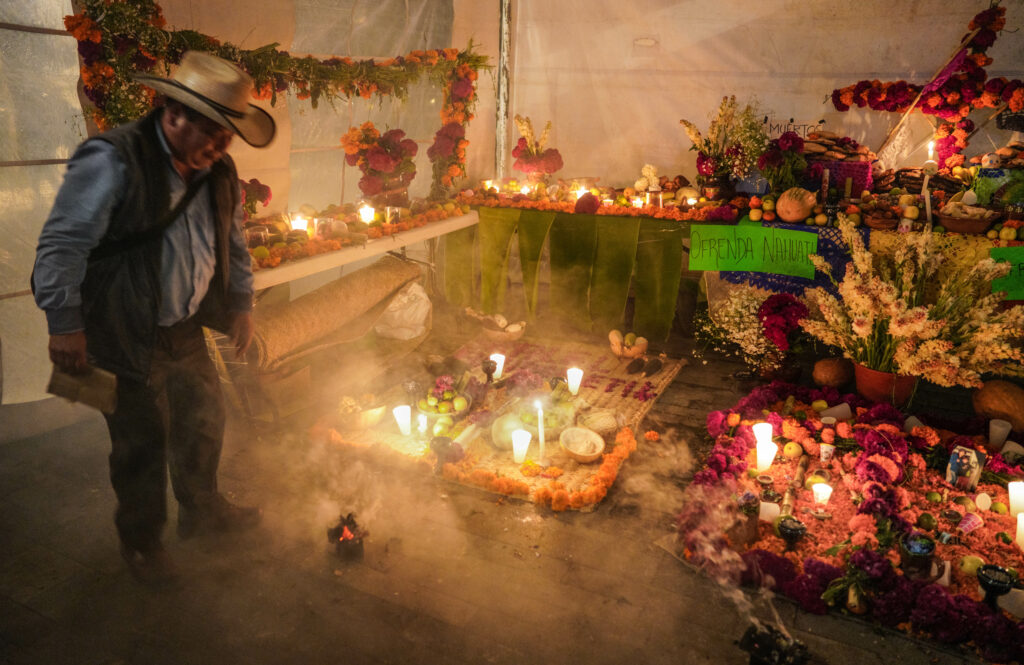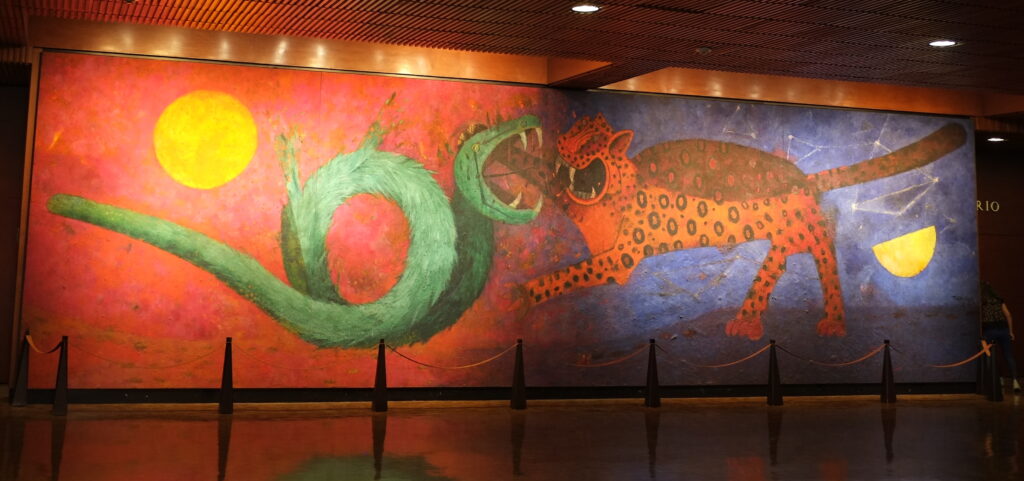The Aztec Antichrist Chronicles Indigenous Resistance and Religious Conversion

In the sweltering heat of the library reading room at the Hispanic Society of America in New York City, I gingerly opened a small, leather-bound notebook stained with centuries-old fingerprints.
Sometime after 1560, a Nahua nobleman named Fabián de Aquino had begun to fill the notebook’s 600 pages with texts of a religious nature, probably with the goal of nurturing his spiritual development or that of his people. At some point, Aquino’s notebook had been sold or stolen from his heirs. It then slipped into oblivion for four and a half centuries.
I wondered how many hands had touched the notebook in the 100 years since the society had acquired it in 1914. Of those who had, I presumed that few, if any, had read and comprehended its contents. It was written almost entirely in Nahuatl, the language of the Aztecs. [1] [1] The Aztecs migrated to what is now Central Mexico around the 13th century and developed a powerful empire. Since the Aztec Empire was brought to an end by the Spanish-Aztec War of 1519–1521, Nahuatl speakers from the colonial period onward are referred to as Nahuas. In this essay, “Aztec” will be used for the period before 1521 and “Nahua” for the period afterward. Outside of Indigenous communities in Mexico today, working knowledge of Nahuatl was scant until late in the 20th century. But a decade of struggling to master this complex and beautiful language had prepared me to decipher this curious collection of writings.
My area of research is the encounter of religions in early colonial Mexico. On that morning, I was hunting for overlooked material for my next research project. This notebook, which some collector had titled Sermones y miscelánea de devoción (“Sermons and miscellany of devotion[al works]”) seemed promising. As I began to skim through its pages, I had no idea how many surprises it held.
Partway through my survey, I came upon a word that made me stop short: “Tezcatlipoca.” Tezcatlipoca, whose name means “Smoking Mirror” in Nahuatl, was an important deity, or teotl, of the Aztecs prior to contact with the Spanish. Over the next few pages, the names of five more deities emerged: Huitzilopochtli (god of the sun and war), Tlaloc (god of rain), Quetzalcoatl (Feathered Serpent), Cihuacoatl (Serpent Woman), and Otontecuhtli (Otomí Lord).
It is common knowledge that in the 16th century, Catholic priests aggressively sought to expunge the Nahuas’ gods from the collective memories of their newly converted subjects. What were these six deities doing in a notebook filled with Christian devotional literature?
Page after page, a host of intriguing characters emerged: Native priests, a traditional healer, a merchant, a divination specialist, a Native ruler, and more. Then I noticed the repetition of the word ātexpo. Reconfiguring the orthography on the fly, I realized this was an abbreviation for antecristo: Antichrist. The enemy of Christ at the end of the world, the Antichrist was first vaguely mentioned in the Bible. Then in medieval Europe, the legend of his rise and fall from power over Earth was developed and popularized in Christian teachings.
Reading more closely, I realized this Antichrist and the other figures were engaging in lively dialogues. Phrases like “Then Antichrist will enter” and “Christ will say” preceded each speech, just like stage directions in the script of a dramatic production. It was then that I understood Aquino’s opening words, “Here begins what is called an auto”—a play.
I eventually concluded that the two plays in this notebook are likely the earliest surviving presentations of the Antichrist legend in the Americas. And they could very well be the earliest surviving play scripts in the whole of the Americas, in any language.
In my new book, Aztec Antichrist, I present my translation of these often shocking plays and describe the uncommon insights they reveal about the blending of Indigenous religions with Christianity. It is my hope that by publicizing such works of Native literature, new stories will be told about the history of the Americas and its First Peoples.
Sometime after 1560, in an unknown location of New Spain (part of which is now Mexico), Aquino sat at his desk surrounded by papers, books, pen, and inkpot. These items denoted his status as an intellectual whose literary pursuits connected him with a Native scribal tradition long predating the arrival of the Spanish. Before him rested a small notebook that he had been filling with religious writings—some copied, some translated, some that he had composed himself.
As a member of the Indigenous nobility, he had been chosen in his youth to receive a European-style education by the Franciscans who settled in his altepetl (ethnic state) a few years after the fall of the Aztec Empire. For Aquino and others like him, education was intended as the tool of conversion and a means of preparation for leadership in the viceroyalty of New Spain. One of the central pillars of this education was training in alphabetic literacy. Although the Aztecs and their Nahua descendants had a centuries-old tradition of bookmaking and recording information in glyphic form, Aquino’s acquisition of alphabetic writing had equipped him with a powerful means of agency.
The act of casting Native actors as Christ and Mary, and allowing them to speak in Nahuatl “Indigenized” the message.
In addition to teaching Nahuas like Aquino to read, write, and speak Spanish, the Franciscans had also adapted Nahuatl, the lingua franca of the Aztec Empire, to the Roman alphabet. Nahuatl writing opened the door for all manner of textual production by Indigenous people. Some of it was closely supervised by the Spanish. However, much writing took place in Native spheres beyond the control of church and state.
Into his notebook of miscellaneous Christian texts, Aquino had edited miraculous stories of the Virgin Mary and the Holy Sacrament, a set of confraternity ordinances, a papal bull of indulgence dated 1560, numerous stories of the lives of the saints, and a text on the proper Christian education of children. One text in particular seems to have been especially important to the author: a Nahuatl treatise he had composed on death, final judgment, hell, and heaven. He signed this section with the words fabian de aquino ytlatequipanol, “the work of Fabián de Aquino.”
This was a bold declaration. It was rare for Native writers of Aquino’s day to claim authorship of Christian texts.
But the most surprising texts Aquino added to his notebook were two religious plays. Both center around the life and career of the Antichrist, narrating the frightening events of the final judgment and the end of the world. It is unclear whether Aquino wrote these plays or merely transcribed the work of a Native playwright. In any case, these early works of American theater provide fascinating insights into the ways Native writers translated and adapted Christianity for Native audiences.
When I found Aquino’s notebook, I was already familiar with colonial Nahuatl religious theater. Soon after the military conquest ended, Spanish priests worked with their Nahua colleagues to compose religious plays in Nahuatl. These productions taught Nahua audiences the basics of Christian doctrine.
The plays were the first examples of European-style theater to be written and performed in the Americas. Although they tended to be composed under the direction of priests, they were entirely Native productions. They placed Native actors in the roles of Christ and Mary, demons and angels, shepherds and apostles.
I also knew that literate Nahuas like Aquino had quickly appropriated this genre and began writing their own religious plays. In the hands of Indigenous writers, Nahuatl religious theater—like all writing by Indigenous people—at times became a vehicle for spreading unofficial religious discourses. These discourses rarely contradicted Christian doctrine overtly. But they often altered and undermined the official message in more subtle ways.
Read an excerpt of the author’s translation of Antichrist and the Hermit from his book Aztec Antichrist.
The mere act of casting Native actors as Christ and Mary, and allowing them to speak their lines in Nahuatl “Indigenized” the message. These Native productions made ecclesiastical authorities nervous. By the early 18th century, the church banned them outright.
The two plays Aquino added to his notebook turned out to be especially subversive. The church would very likely have confiscated the works if the authorities had discovered them. In choosing to compose two plays about the Antichrist, the Native author selected a topic that New Spain’s earliest evangelists rarely spoke about.
For well over 1,000 years, apocalypticists and street-corner preachers had interpreted the signs of the times that announced the Antichrist’s coming. These preachers often accused powerful figures (sultans, popes, kings) of being the Antichrist. They also implicated entire groups of people (Jews, Protestants) as being part of his malevolent plans. For this reason, Catholic authorities may have deemed the Antichrist legend one European import that was too politically risky to introduce to New Spain’s Native populace.
Another possible reason for the ban may have been rooted in priests’ understanding of how Nahuas conceptualized divinity. Nahuas saw deities as a potent synthesis of forces that were both creative and destructive. However, they were considered neither “good” nor “evil” in an absolute sense. Might Native audiences have seen Christ and “Anti-Christ” as simply two complementary manifestations of the same sacred power?
The Native author of the plays also transgressed another red line of the late 16th century: the church’s prohibition on writing in detail about Indigenous religion. Each of the 25 characters the author brought on stage—from Tezcatlipoca to Tonalpouhqui (a divination specialist)—confesses a sin that in many instances involved Indigenous ritual practices that the church was actively suppressing. These included the burning of incense and papers, ritual sweeping, the blowing of conch-shell trumpets, divination rites and the reading of divinatory manuals, bloodletting, and even human sacrifice.
Priests rarely dared to mention such things in their sermons. Instead, they referred to them obliquely as “idolatry” and “idolatrous practices.” Though the plays condemned these practices, there was power in Native actors speaking of these acts in their Native language in front of a Native audience.
The fact that no other surviving colonial Nahuatl plays transgress in such flagrant ways underscores the uniqueness of the autos Aquino copied into his notebook.
The Aztec Antichrist I began to glimpse in these plays is similar to his European cousin: a powerful and frightening figure who threatens people with violence and tries to deceive them into worshipping him as the Christ. But the author of this American incarnation gave the demon a decidedly Indigenous hue.
For example, the Aztec Antichrist laments, “Why did you dismantle my temple?” This suggests the author linked the Antichrist with one of the Aztec teteoh (deities) the Spanish priests tried to erase. Shortly after the military conquest, the Spanish attempted to end the state religion of the Aztecs. The conquistadors and priests razed temples, burned deity images and sacred books, and halted the public ritual sacrifices that were essential to maintaining the Aztec imperial state’s cosmic and political order.
The plays also shed light on the tactics the Spanish used to suppress Indigenous cultural and religious traditions. In his speeches, the Aztec Antichrist violently opposes the priests’ evangelizing efforts. He tries to tempt converted Native people back to the religious practices of their ancestors. He urges men to reject the priests’ insistence on monogamy and to embrace the traditional practice of polygyny. He encourages women to once again put on paint and feathers as traditional adornments. “Devote yourselves,” he cries, “to everything that you used to devote yourselves to!”
As I read the plays, questions filled my head and spilled into the pages of my own notebook.
If the friars almost never preached about the Antichrist, how had an Indigenous person like Aquino learned of this medieval European legend? What significance might the Antichrist story have had for Indigenous people living in what must have seemed like apocalyptic times—the fall of the Aztec Empire and the arrival of Spanish colonization? And should a Nahuatl-speaking Antichrist be interpreted as a sign of submission to the colonial regime, or an act of resistance, or something in between?
To me, the fact that these plays were composed by a Native writer during a time of extreme cultural trauma for Native populations underscores the remarkable resilience and creativity of Indigenous peoples in the face of conquest and colonization. Over successive generations, Nahua intellectuals like Aquino wielded their pens to transform the sword of Christianity into a new narrative. This evolving story retained important elements of Indigenous culture while integrating aspects of the foreign that resonated with them.
This blended narrative still manifests itself today in the dizzying variety of ways some Indigenous cultures engage with Christianity.





































